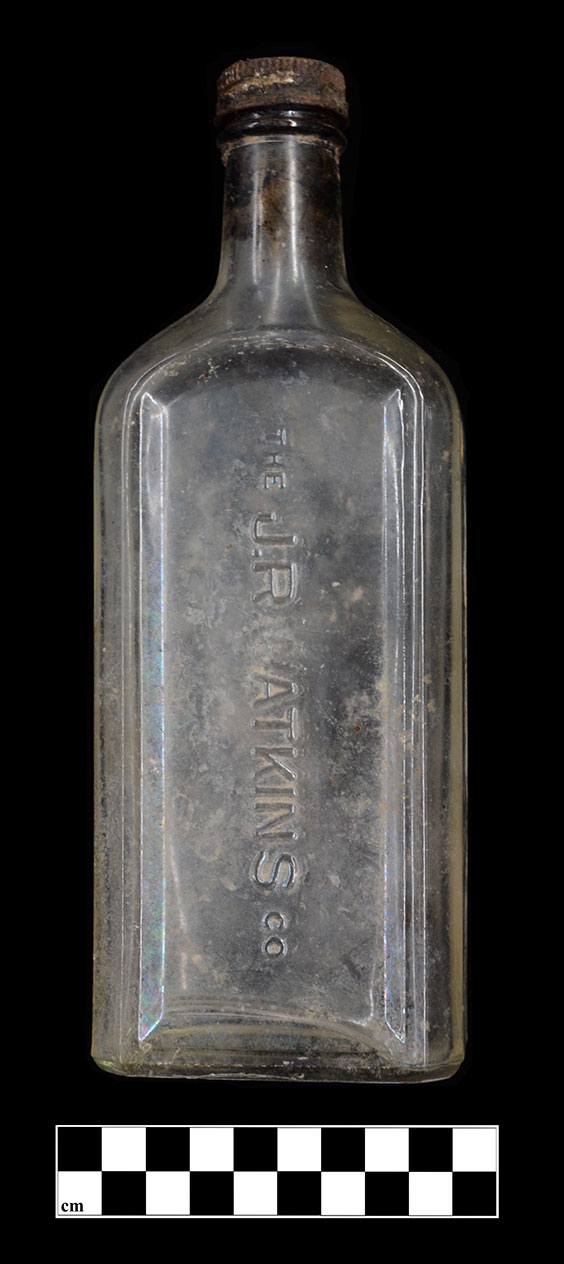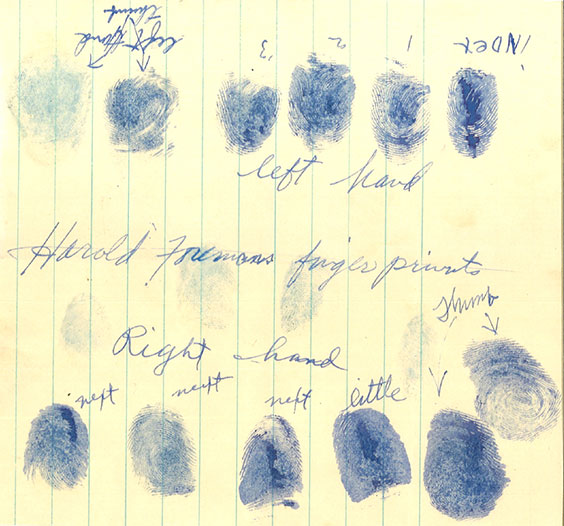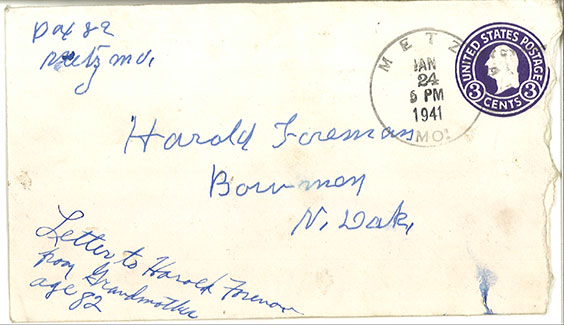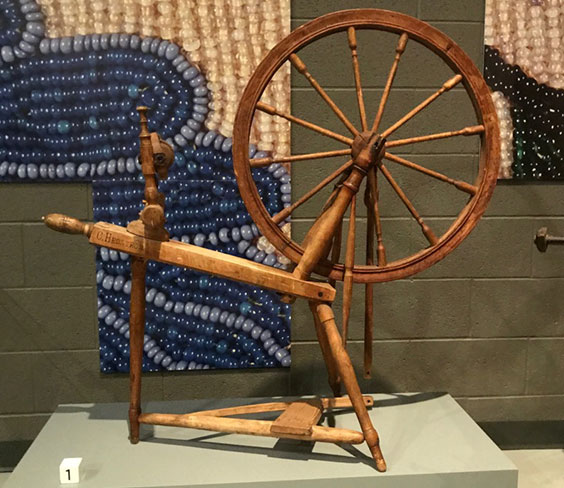For the past year, I have been cataloging collections that we curate for the U.S. Forest Service. One of my favorite collections comprised a time capsule buried by a resident of Slope County in 1941 and discovered by archaeologists in 2005. So that has me thinking - if you made a time capsule, what would you put in it? Where would you put it? What would you want people in the future to know?
In 2005, a U.S. Forest Service employee inspecting Forest Service land in Slope County found historic objects stashed inside a rock shelter. The artifacts included a sealed J.R. Watkins bottle containing a note dated 1941.

The J.R. Watkins bottle that contained the map (2012A.94.3)
The employee notified a Forest Service archaeologist so the finds could be documented, mapped, photographed.1
As an archaeologist myself, I can tell you that it is pretty unusual to find a map accompanying any artifacts you discover. But that is exactly what the Forest Service archaeologists found. The note inside the bottle included a hand-drawn map with instructions to a “grand burial” that “bears treasure.”2

Detail of the map (2012A.94.2)
And the map did lead archaeologist to the “treasure”. But this wasn’t Hollywood-style pirate treasure—no silver, no gold, no pieces-of-eight. It was treasure of a different kind—an informal time capsule. The “grand burial” consisted of several bottles, a jar, and a metal lunch box that had been buried in the ground by a local man.

The capsules (from left to right): a liquor bottle, an Atlas E-Z seal canning jar, a J.R. Watkins bottle, an unlabeled bottle, and a metal lunch box (left to right 2012A.76.54, 55, 53, 56, 59)
It included photos and negatives, magazine clippings, handwritten notes, and small objects including popcorn seeds, candy, cigarettes, matches, and election campaign pins.

Calvin Coolidge (left) and Franklin Delano Roosevelt (right) election campaign pins (2012A.76.90 & 91)
What would you want people who found your time capsule to know about you? Harold Foreman buried the time capsules between January and March, 1941.3 We know his personal details from the notes that he wrote and buried with the objects in the containers. Harold was twenty-seven years old when he buried the objects. He and his wife Pauline lived with his parents in Slope County, ND.4 Harold was the oldest of nine siblings.5
Would you write about current news? When Harold buried his capsules, the United States had not yet entered World War II. But the war was progressing elsewhere in the world, and Harold followed what was going on. He wrote about wondering who will win and hoped that the Lend-Lease bill proposed to send aid to Great Britain will pass U.S. Congress.6
Would you want people to know what technology is like? What transportation is like? Harold enclosed magazine clippings of cars, trucks, tractors, and trains.

Case tractors advertisement (2012A.76.21)
My favorite clipping is a glamorous full page color (complete with silver foil!) advertisement for a Streamliner railcar.

Advertisement for Pullman-Standard Streamliners (2012A.76.52)
Harold listed vehicles owned by family members. In 1941, Harold drove a 1927 Chrysler sedan that needed repair.7 His brothers Warren and Denver owned a motorcycle.8 Harold put two spark plugs in the metal lunch box capsule.

Champion spark plugs (2012A.76.111-112)
Would you write about your dreams for the future? Would you write about your life experiences and adventures? Harold wrote that he planned on going to California to take up detective work.9 Perhaps with this in mind, Harold decided to include a piece of paper containing his own fingerprints.

Harold Foreman’s fingerprints (2012A.76.29)
Another object is an “old pocket watch” that traveled with Harold “through the States”.10 On the back of the watch are visible fingerprints—do these belong to Harold?

Close-up of pocket watch with visible finger prints. Do these fingerprints belong to Harold? Did this watch go with Harold on his trip to visit his grandmother in Missouri? (2012A.76.89)
He described a trip he and his wife took through several states to visit his grandmother in Missouri.11 He even included a letter written to him by his eighty two-year-old grandmother.12

Envelope containing letter from Harold’s grandmother in Missouri (2012A.76.37)
Would you include pictures? Harold included photo negatives with scenes from North Dakota including badlands near Waterford City, a wheat field, and a burning coal mine near Ranger.

Butte in badlands near Watford City (2012A.76.72)
Would you include a photo of yourself? Would it be serious? An action shot? Or maybe a funny photo? Harold included a photo of himself making muscle arms and a funny face.

Close-up of Harold Foreman posing (2012A.76.68)
Would you want to know who finds your capsule? Harold wanted to know. He even offered a reward if the finder contacted him.13 But Harold wasn’t sure how long it would take for someone to find it, so just in case he was no longer living in North Dakota, he left a list of friends and relatives to contact.14 U.S. Forest Service archaeologist Mervin Floodman did look for Harold.
Unfortunately, Harold died in a car accident in the Pacific Northwest in 1972.15 However, Floodman was able to contact his youngest brother, Howard, in 2006. Howard did not know about the time capsule that his older brother had buried.16 But on one of Harold’s notes, there is a doodle Howard made when he was only six.

Detail of house doodle by Howard, Harold’s youngest brother (2012A.76.5)
It is rare for an artifact collection to provide details about one individual’s life. That is what makes the Foreman time capsule so intriguing. What would you want someone in the future to know about you?
Special thanks to the U.S. Forest Service for permission to write about their collection. Special thanks as well to photo archivist Sharon Silengo and volunteer Robert Porter in Archives for their enthusiastic expertise in scanning the photos and negatives.
1Floodman, p. 1-3
22012A.94.2
32012A.76.8-9, 23-24, 31-34, .36, .40; 2012A.94.2
42012A.76.2; 2012A.76.8; 2012A.76.36; 2012A.76.7; 2012A.76.8
52012A.76.25
62012A.76.8
72012A.76.4
82012A.76.4
92012A.76.7
102012A.76.36
112012A.76.2
122012A.76.2
132012A.76.26
142012A.76.26
15Floodman p. 26
16Floodman p. 25, 26

















